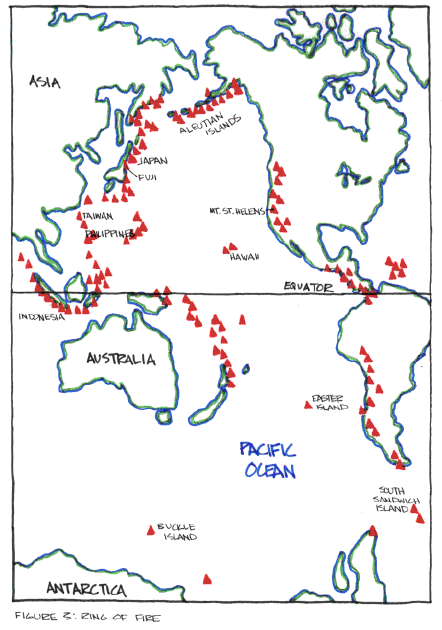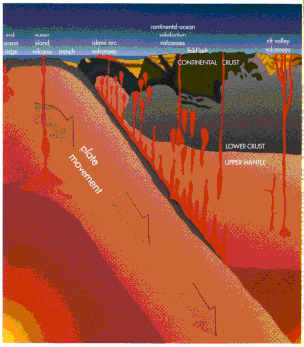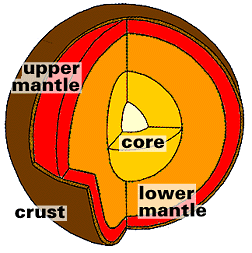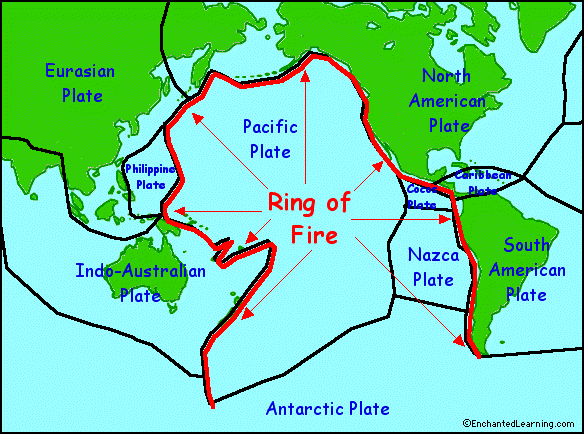


The earth has "plates" and when two plates hit each other, one goes under and becomes "molten" which means it gets so hot, the ground turns into liquid. The molten stuff finds a hole in the ground and comes out the top. All the continents used to be just one big piece of land, but the land broke up and floated away and created the 7 continents we have now. This was called continental drift. If you look at South America, it looks like it could fit like a puzzle piece into Africa.
Because of the way the ground broke, it created plates. Even though the ground is heavy, the plates continue to move and that can cause earthquakes and volcanoes. When two plates hit each other, one can go under and become "molten" which means it gets so hot, the ground turns into liquid. The molten stuff finds a hole in the ground and comes out the top. When the molten stuff is in the volcano it is called magma. When it explodes, it is called lava.
Volcanoes explode because of the gas buildup. When the gas builds up a lot, the gas and lava, which is hot rocks, blows out the top, it's a lot like the way a soda explodes. The lava can get up to 1600 degrees- a lot hotter than an oven. After the lava cools, it turns into rock. One of the types of rock is obsidian, which is shiny and black. Volcanoes can also occur on other planets. Not all volcanoes explode, some are inactive and some are dormant.
The lava can kill people, but there can be other problems. If there's heavy rains on the ash it creates a thick mud that has trapped people and animals. When all the trees and plants are destroyed by the lava, the animals have nothing to eat.
Lots of volcanoes happen in the "Ring of Fire" which is from California to Asia. There are large tectonic plates in the Ring of Fire and lots of earthquakes happen here too.
 * Vocabulary *
* Vocabulary *
Magma- a mass of completely or partly molten rock containing volatile materials either dissolved in the melt, or as bubbles of gas
Lava- molten rock at the surface of the earth
Viscosity- the "stickiness" or resistance of a substance to flow. The inverse of fluidity. The viscosity of magma depends on the chemical composition, silica content, amount and condition of gas in it, the amount of solid being carried by it, and the temperature

